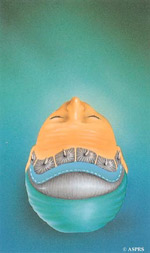Forehead Lift
- Home
- Forehead Lift
Forehead Lift
While no one is immune to the effects of aging, a forehead lift, also known as a browlift, can minimize some of the most visible signs-drooping eyebrows, “hooding” over the eyes, forehead furrows and frown lines that come with age. In a forehead lift, the muscles and skin that cause the problems are removed or altered to smooth the forehead, raise the upper eyelids and minimize frown lines. The result can be a more alert, more animated, more youthful appearance. Recent advances in plastic surgery have made the forehead lift a relatively simple procedure with results that last from five to 10 years or longer. It can be done alone, or in conjunction with other procedures, such as facelift, eyelid surgery, or nose reshaping. If you’re considering a forehead lift, this will give you a basic understanding of the procedure -when it can help, how it’s performed, and what results you can expect. It can’t answer all of your questions, since a lot depends on the individual patient and the surgeon. Please ask your surgeon about anything you don’t understand.
The best candidates for a forehead lift
Men and women of any age may be good candidates for a forehead lift. While the procedure is most commonly done on people in their forties to sixties to slow the visible effects of aging, it can also help people with inherited conditions, such as a droopy brow or furrowed lines above the nose. If you are bald or have a receding hairline, you may still be a good candidate for a forehead lift. Your surgeon will simply alter the location of the incision to camouflage it as much as possible. If you have already had plastic surgery on your upper eyelids, a more conservative forehead lift may be in order, to assure that enough skin remains to allow you to close your eyes comfortably after surgery. A forehead lift can enhance your appearance and your self-confidence, but it won’t necessarily change your looks to match your ideal, or cause other people to treat you differently. Before you decide to have surgery, think carefully about your expectations and discuss them with your surgeon.
All surgery carries some uncertainty and risk
Complications are rare and usually minor when a forehead lift is performed by a qualified plastic surgeon. Yet, the possibility must be considered. Your ability to raise your eyebrows or wrinkle your forehead may be altered on one or both sides. This may require additional surgery to minimize the difference between the two sides. A broad scar may form if there is excessive swelling. Hair loss may occur along the scar edges in some cases. This can be treated by surgically removing the scar tissue or areas of hair loss so a new scar can form. You can reduce your risk of complications by closely following your surgeon’s instructions both before and after surgery.
Planning your surgery
To see how a forehead lift might change your appearance, stand in front of a mirror and place the palms of your hands at the outer edges of your eyes, above your eyebrows. Then gently draw the skin upward to raise the brow and forehead area. That is approximately what a forehead lift would do for you. If you decide to see a surgeon, he or she will first evaluate your face, including the skin and underlying bone, and discuss your goals for the surgery. The surgeon will ask you about certain medical conditions that could cause problems during or after surgery, such as uncontrolled high blood pressure, blood clotting problems, or the tendency to form excessive scars. Be sure to tell your surgeon if you have had previous facial surgery, if you smoke, or if you take any drugs or medications, especially aspirin or other drugs that affect clotting. If you decide to proceed with a forehead lift, your surgeon will explain the techniques and anesthesia he or she will use, the type of facility where the surgery will be performed, and the risks and costs involved. Don’t hesitate to ask your doctor any questions you may have, especially those regarding your expectations and concerns about the results of surgery.
Preparing for your surgery
Your surgeon will give you specific instructions on how to prepare for surgery, including guidelines on eating and drinking, smoking, and taking or avoiding certain vitamins and medications. Carefully following these instructions will help your surgery go more smoothly. If your hair is short, you may want to let it grow out before surgery, so that it’s long enough to hide the scars while they heal. Whether your forehead lift is done on an outpatient or an inpatient basis, you should arrange for someone to drive you home after your surgery, and to help you out for a day or two if needed.
Where your surgery will be performed
A forehead lift may be performed in a surgeon’s office based facility, an outpatient surgery center, or a hospital. It’s usually done on an outpatient basis, without an overnight stay.
Types of anesthesia
Most forehead lifts are done under local anesthesia, combined with a sedative to make you drowsy. You’ll be awake but relaxed, and your face will be insensitive to pain. (However, you may feel some tugging or occasional discomfort.) Some surgeons prefer general anesthesia, in which case you’ll sleep through the operation.
The surgery
The surgical team begins by tying your hair with rubber bands in front of and behind the incision area. Your head will not be shaved, although hair immediately in front of the incision line may need to be trimmed. For most patients, the incision will start at about the level of your ears and run across the top of your fore head. If you have a high or receding hairline, your surgeon may make the incision just at your hairline to avoid making your forehead appear even higher. By wearing your hair down on your forehead, most such scars be come relatively inconspicuous. If you are bald or balding, your surgeon may recommend a mid-scalp incision so the resulting scar follows the natural junction of two bones in your skull. Forehead skin is then carefully lifted so portions of muscle and excess tissue can be removed. Any excess skin at the point of incision will also be removed. The surgeon will close the incision with stitches or clips. Your face and hair will be washed to prevent irritation and the rubber bands will be removed from your hair. The incision may be covered with a gauze padding and your head may be wrapped with an elastic bandage. Some surgeons do not use any dressings.
After your surgery
A forehead lift is possible in men, but may require special planning to hide the scars. This involves an individual discussion between the physician and the patient. You may experience some numbness and temporary discomfort around the incision, which can be controlled with medication prescribed by your surgeon. If you have a tendency toward headaches, your doctor may prescribe an additional longer-acting local anesthetic during surgery as a preventive measure. Your doctor may tell you to keep your head elevated for two to three days following surgery to keep the swelling down. Some swelling is inevitable, even around your eyes or cheeks. Bruising and swelling should begin to disappear in a week or so. Numbness on the top of your scalp may be replaced by itching as nerves heal. These sensations may take up to six months to fully disappear. Bandages, if used, will be removed a day or two after surgery. Most stitches or clips will be removed in 10 to 14 days, or perhaps in two stages. Some of your hair around the incision may fall out and may temporarily be a bit thinner. Normal growth will usually resume within a few weeks or months. Permanent hair loss is rare.
Getting back to normal
While you should be up and about in a day or two, plan on taking it easy for at least the first week after surgery. You should be able to shower and shampoo your hair one or two days after surgery or as soon as the bandages are removed. Most patients are back to work or school in a week to ten days. Vigorous physical activity should be limited for several weeks, including jogging, bending, heavy house work, sexual relations, or any activity that increases your blood pressure. Prolonged exposure to heat or sun should be limited for several months. You can face the world again as soon as you’re com fortable going out. Most visible signs of surgery should fade completely within two to three weeks. Minor swelling and bruising can be covered almost immediately by special camouflage makeup. (Ask your surgeon for more information on applying makeup following surgery, including the ASPRS brochure, Camouflage Cosmetics.) It’s not unusual to feel tired and let down at first, but that will pass as you begin to look and feel better.
Your new look
Most patients are pleased with the results of a forehead lift. Often, patients don’t realize how much their sagging forehead contributed to the signs of aging until they see how much younger and more rested they appear after the lift. While a forehead lift, like a facelift or any other surgery to minimize the effects of aging, does not stop the clock, it can minimize the appearance of aging for years. As time passes, you may want to repeat the procedure. But even if you don’t, you’ll always look better than if you never had a forehead lift at all.
|
|
|
A forehead lift can smooth the forehead, raise the upper eyelids, and minimize the frown lines that come with aging.
|
|
|
|
In preparation for a forehead lift, the hair is tied back with rubber bands in front of and behind the incision area. An incision is usually made across the top of the head, just behind the hairline.
|
|
|
|
Forehead skin is gently lifted and portions of facial muscle and excess skin are removed. The incision is then closed with stitches or clips.
|
|
|
|
The result of a forehead lift is a younger, more rested look.
|




